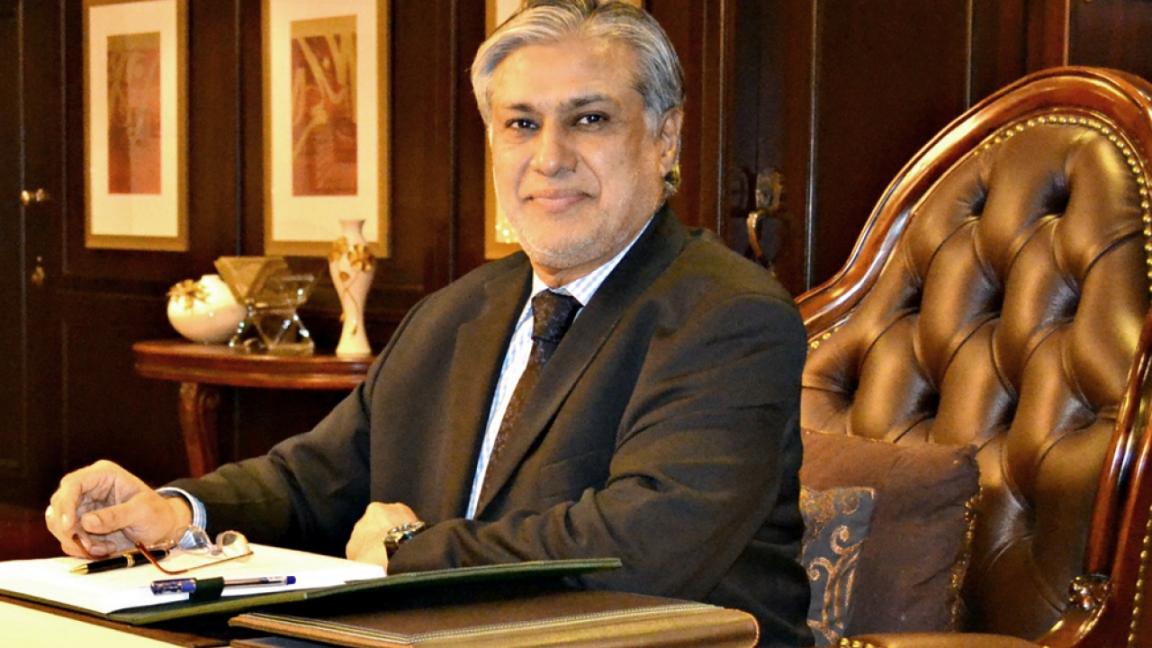When the present government in Pakistan started its term in June 2013, it inherited challenges like a large fiscal deficit, rising debt burden, unfavorable balance of payments, low foreign exchange reserves, poor growth in tax revenues with shrinking tax-base, swelling current expenditures, a gigantic circular debt that was unraveling the energy sector, flight of capital, weakening exchange rate and perilously declining investor confidence, Pakistan Senator Mohammad Ishaq Dar says in an article sent to the Financial Tribune.
On the external front, the major development partners had considerably scaled down their support due to waning economic fundamentals and apparent inability of the country to service its external obligations in the near future.
One of the main challenges was absence of external financing which was causing turbulence in the domestic exchange markets and tilting the composition of public debt towards domestic debt and that too into shorter maturities creating vulnerabilities and entailing high rollover and refinancing risks, he said.
State Bank of Pakistan forex reserves, which stood at $6 billion in June 2013 fell to $2.8 in February 2014. It was a highly precarious situation for the external account.
On assuming office, the present government took necessary steps for avoiding default, ensuring fiscal discipline and consolidation, stabilizing a collapsing economy and accelerating growth.
Accordingly, the government started revamping the economy through structural reforms and stabilization measures such as reduction in un-targeted subsidies, broadening the tax base, restructuring the public sector enterprises, building foreign exchange reserves and reducing the fiscal deficit, while ensuring that social safety net and development spending are not only protected but enhanced considerably, he said.
Major Indicators
Following is a brief account of the improvement in major economic indicators over the period from June 2013 to June 2015:
Income for the Federal Board of Revenue increased from the level of Rs. 1,946 billion ($18.5 billion) in FY 2012-13 to Rs. 2,588 billion in FY 2014-15. FBR is on course to achieve the revenue collection target in excess of Rs. 3,000 billion during the FY2015-16.
Budget deficit was contained at 8.2% in FY 2012-13 (down from a projected 8.8%) within weeks of assuming office. The deficit has been reduced to 5.3% in FY 2014-15. We are on track so far to reduce it to 4.3% for the FY 2016 ending in June 2016.
Average inflation reduced from 8.62% in FY 2013-14 to 4.53% in FY 2014-15. Average CPI during the period Jul-Feb of FY 2016 has been recorded at 2.48%.
Credit to private sector, which was negative at Rs. 19.2 billion in FY 2012-13, increased to Rs. 208.7 billion in FY2014-15. During the current financial year 2016, the amount has increased to Rs. 299.7 billion till 12 February 2016.
Credit to agriculture sector increased from Rs. 336.2 billion in FY 2012-13 to Rs. 515.9 billion in FY 2014-15. The target for the current FY 2015-16 is Rs. 600 billion.
Development spending, which was Rs. 348 billion in FY 2012-13 increased to Rs. 502 billion in FY 2014-15. During the current FY 2015-16 an amount of Rs. 700 billion has been budgeted.
Remittances increased from $13.9 billion in FY 2012-13 to $18.7 billion in FY 2014-15. During the current FY, $12.7 billion were remitted till the February 29, 2016.
The fiscal consolidation paved the way for a reduction in the debt to GDP ratio, which fell from 64% in FY 2012-13 to 63.5% at the end of FY 2014-15. In the next three fiscal years, our target is to bring down the debt to GDP ratio to 60% or less in accordance with the provisions of the Fiscal Responsibility and Debt Limitation Act, through effective fiscal and prudent debt management.
Debt management has taken special emphasis in this whole scenario as the absolute debt continues to grow over the last many years due to persistently large fiscal/budget deficits of previous successive governments. Our government’s vision is to further reduce the statutory debt limit from existing 60% to 50% in 15 years, starting from FY 2018-19 and to limit statutorily the federal fiscal deficit to 4% through introduction in the parliament of an amendment bill for necessary changes in the FRDLA in this context.
IMF Loan
The present government entered into an Extended Fund Facility with the International Monetary Fund in September 2013 with estimated total amount of $6.6 billion. To date the inflows from IMF under current program has been $5,271 million while the repayments to IMF in this period amount to $4,415 million, in settlement of the installments due of the loans taken by the previous government. Therefore net inflow from IMF in our tenure stands at $856 million, which is included in the increase of $5.23 billion recorded in external debt, the senator said.
The present government has also repaid over $10 billion of external debt till end December 2015, which mainly related to the borrowings of the previous governments. Despite this heavy repayment, the foreign exchange reserves of the country have risen to more than $20 billion, of which SBP reserves were $15.8 billion at end Dec. 2015, which is equal to nearly four months of import-cover as compared to less than around three weeks of import-cover in February 2014 when the SBP reserves stood at $2.8 billion.
It is worth mentioning here that while the external public debt has gone up by $5.23 billion during the two and a half years, the forex reserves of SBP have increased by $9.8 billion in the same period or by $13 billion when compared to from February 2014 to December 2015.
Pakistan’s economy is showing visible signs of improvement.


